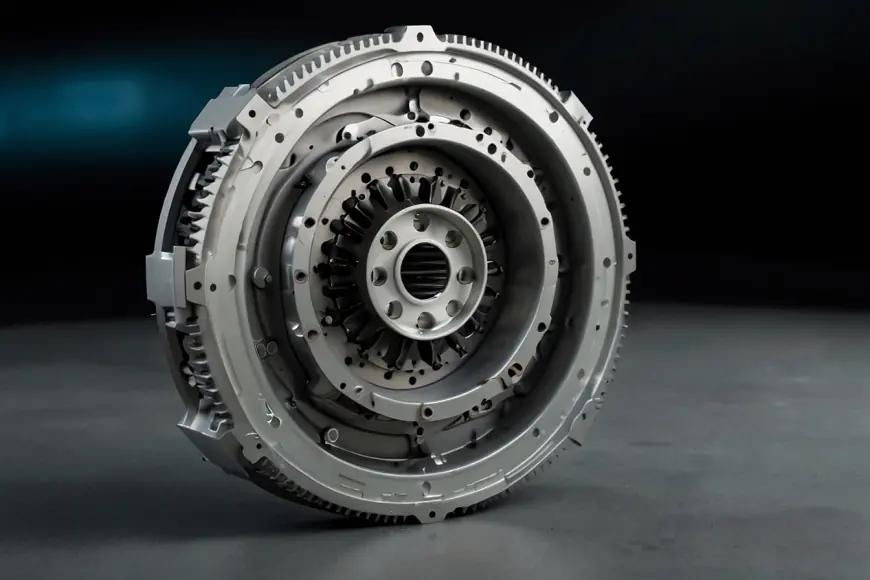Global Demand for Automotive Dual Mass Flywheel Market 2030
Market dynamics are being shaped by key trends, including the shift toward advanced drivetrain systems that enhance overall vehicle efficiency and performance.

Industry Key Highlights
The global Automotive Dual Mass Flywheel Market is poised for steady growth, reflecting the increasing demand for smoother driving dynamics, advanced transmission systems, and fuel-efficient powertrains. Valued at USD 5.45 Billion in 2024, the market is projected to reach USD 6.59 Billion by 2030, expanding at a CAGR of 3.22% during the forecast period.
Key highlights include:
- Increased adoption of DMFs in passenger and commercial vehicles.
- Rising demand for high-torque and turbocharged engines.
- The growing significance of aftermarket sales due to increasing vehicle longevity.
- Innovations in lightweight and self-adjusting DMFs enhancing market appeal.
Market Overview
The automotive dual mass flywheel serves as a vital component for modern powertrain systems. Its core functionality lies in dampening torsional vibrations from the engine before they are transferred to the transmission. By isolating vibration and noise, DMFs not only improve driving comfort but also prolong the life of transmission components. These benefits are becoming increasingly critical in high-performance vehicles and in regions with stricter noise, vibration, and harshness (NVH) standards.
The market's growth is propelled by a wide range of consumer and industry dynamics, including the trend toward vehicle downsizing, a rise in hybrid and performance vehicle production, and the need to comply with environmental regulations without compromising on power delivery.
Download Free Sample Report: https://www.techsciresearch.com/sample-report.aspx?cid=28077
Emerging Trends in the Automotive DMF Market
1. Smart and Self-Monitoring Flywheels
Technological integration is transforming the traditional flywheel into a smart component. Real-time diagnostics and predictive maintenance features embedded in DMFs are enabling users to track wear-and-tear, thus minimizing unexpected breakdowns and reducing downtime.
2. Increased Demand in Hybrid and Semi-Automatic Vehicles
The hybrid vehicle boom is giving rise to new opportunities for DMFs. These vehicles require sophisticated power transmission systems to manage dual power sources. DMFs offer seamless torque delivery between electric and internal combustion systems, helping maintain ride quality.
3. Use of Lightweight Materials
Manufacturers are increasingly exploring lightweight alternatives such as maraging steel and aluminum alloys over traditional cast iron. This shift is aimed at improving fuel efficiency and reducing overall vehicle weight, both key drivers in today’s regulatory landscape.
4. Customization in Aftermarket Solutions
With rising vehicle longevity, there's a growing aftermarket for DMFs. Custom-designed replacement flywheels that cater to specific vehicle models are becoming more prevalent, allowing OEMs and third-party providers to offer tailored solutions.
5. Rising Popularity of Performance and Luxury Vehicles
As the demand for high-end vehicles grows, so does the need for smoother gear transitions and quieter rides. Performance-focused manufacturers are integrating DMFs to enhance engine responsiveness and optimize driving experience.
Market Drivers
1. Consumer Demand for Improved Drivability
Modern vehicle buyers are seeking refined ride quality, fuel economy, and less drivetrain noise. DMFs directly contribute to this by ensuring smooth torque transmission and minimizing cabin vibrations.
2. Growth in High-Torque Engine Usage
Turbocharged engines generate more torque, but they also produce more torsional vibration. DMFs act as a buffer, making them essential in vehicles with advanced, downsized, yet powerful engines.
3. Stringent Emissions Regulations
Governments around the world are imposing stricter fuel efficiency and emissions standards. DMFs help reduce fuel consumption by optimizing engine-transmission synergy, aligning with regulatory goals.
4. Rising Adoption of Manual and Semi-Automatic Transmissions
While automatic transmissions are popular, manual and semi-automatic options still hold significant market share, especially in sports and utility vehicles. DMFs are crucial in these configurations for reducing drivetrain wear.
5. Boom in Vehicle Ownership and Extended Life Cycles
More people are owning cars for longer periods, fueling demand for durable aftermarket parts, including replacement DMFs. This trend is driving growth across both OEM and aftermarket segments.
Segmentation Analysis
By Vehicle Type
- Passenger Cars: The largest and fastest-growing segment due to demand for comfort and performance.
- Commercial Vehicles: Focused on durability and operational efficiency.
By Transmission Type
- Manual: Widely used in Europe and Asia.
- Semi-Automatic: Gaining popularity for offering a balance between comfort and control.
- Automatic: Less reliant on DMFs but still present in high-performance variants.
By Material Type
- Cast Iron: Traditional material, cost-effective.
- Maraging Steel: Stronger and lighter.
- Aluminum Alloy: Lightweight and corrosion-resistant, suited for electric and hybrid applications.
By Region
- North America: Fastest growing due to rising demand for performance cars and aftermarket parts.
- Asia-Pacific: Largest market share, driven by China and India.
- Europe: Strong presence of OEMs and high-performance car makers.
Competitive Analysis
The global DMF market is highly competitive, with key players leveraging technological advancements and regional expansion strategies to gain market share.
Top Companies Include:
- LuK GmbH & Co. KG
- Valeo S.A.
- ZF Friedrichshafen AG
- Schaeffler Group
- Velteks Automotive
- AMS Automotive LLC
- Aisin Seiki Co. Ltd.
- Amtech International
- JMT Auto Limited
- American Axle and Manufacturing, Inc.
These companies are investing in R&D to innovate self-adjusting flywheel systems and lightweight, high-strength materials. Strategic collaborations with OEMs are also common, helping to integrate new flywheel technologies at the vehicle design stage.
Future Outlook
As vehicle architecture continues to evolve, especially with the growth of electric and hybrid powertrains, the role of DMFs will likely expand. Innovations in smart transmission systems, along with growing demand for enhanced NVH characteristics, will sustain market interest in the coming decade. Moreover, as emerging economies increase automotive production, especially in the passenger car and light commercial vehicle segments, the demand for DMFs is anticipated to remain robust.
The aftermarket segment will also see strong growth, supported by increasing vehicle longevity, driver awareness about maintenance, and higher demand for performance upgrades. With continued investment in lightweight materials and smarter flywheel systems, the DMF market is on a trajectory of technological transformation and commercial expansion.
10 Benefits of This Research Report
- Comprehensive Market Overview: Offers detailed insights into market size, growth rate, and forecasts through 2030.
- Detailed Segmentation: Breaks down the market by vehicle type, transmission, material, and region.
- Emerging Trends: Highlights latest innovations like smart flywheels and lightweight materials.
- Growth Drivers: Identifies key factors fueling market expansion.
- Competitive Landscape: Provides company profiles, strategies, and market positioning.
- Regional Insights: Evaluates growth opportunities across North America, Europe, Asia-Pacific, and others.
- Future Outlook: Projects long-term market trends and opportunities.
- Aftermarket Potential: Analyzes the growing role of replacement parts and customer behavior.
- Strategic Recommendations: Helps stakeholders align business decisions with market direction.
- Data-Driven Insights: Supports decision-making with charts, forecasts, and verified metrics.
Conclusion
The Automotive Dual Mass Flywheel Market is positioned for consistent growth, underpinned by technological advancements, changing consumer expectations, and the evolving automotive landscape. With a projected value of USD 6.59 Billion by 2030, this market segment is proving to be a vital cog in the wheel of drivetrain innovation. From improved NVH characteristics to enhanced transmission durability, DMFs are increasingly becoming a standard in modern vehicles, reflecting the industry's push towards greater performance and efficiency.
As automakers aim to meet stricter environmental regulations without compromising vehicle comfort and performance, the adoption of DMFs will only continue to grow. This research underscores the vast opportunities for OEMs, aftermarket suppliers, and investors looking to capitalize on this evolving segment of the automotive industry.
Contact Us-
Mr. Ken Mathews
708 Third Avenue,
Manhattan, NY,
New York – 10017
Tel: +1-646-360-1656
Email: [email protected]
Website: www.techsciresearch.com
What's Your Reaction?
 Like
0
Like
0
 Dislike
0
Dislike
0
 Love
0
Love
0
 Funny
0
Funny
0
 Angry
0
Angry
0
 Sad
0
Sad
0
 Wow
0
Wow
0



















































